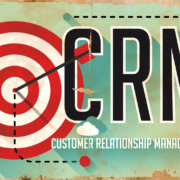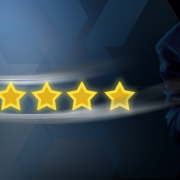3 Tips for Evaluating Senior Living Software: Marketing Automation
Senior living communities need a wide variety of senior living software to support operations—from electronic medical records to CRMs to everything in between. Today, we’re going to talk about an important piece of senior living software for the marketing and sales department: marketing automation.
First, what is marketing automation?
With marketing automation, you can easily schedule and duplicate various marketing tasks (typically connected with actions on your website) to happen without any further work on your part.
For example, you can have your marketing automation “score” every lead that comes into your website as a marketing-qualified lead or a sales-qualified lead based on criteria you set. The marketing leads will automatically enter email workflows that will nurture them. The sales leads will immediately go to sales for follow up. All of this happens AUTOMATICALLY without anyone having to label things manually. This frees up the marketing and sales teams to focus on substantive tasks.
Learn more about what marketing automation is.
Does your senior living community need marketing automation?
The goal with marketing automation is to make everyone’s lives easier. Think marketing, sales, and even your prospects. Every senior living community operating today needs some level of marketing automation in order to remain competitive.
In other words, the question isn’t whether you need it. The question is what type of marketing automation you need. Below, we discuss three tips for evaluating this important piece of senior living software.
How should you evaluate different marketing automation solutions?
1. Consider what your teams need.
Marketing automation companies typically offer different tiers ranging from basic products to the Cadillac version. Get the right solution for your needs. You don’t want to spend dollars on features your teams don’t need or won’t use.
Questions to ask as you evaluate marketing automation:
- What’s your number one reason for investing in marketing automation right now? Make sure you can articulate this clearly.
- How easily does the marketing automation software scale? For example, if you’re looking to expand your senior living portfolio in 2021 and 2022, how easily can new communities get on board with the solution?
- How much does it cost? When comparing products, make sure you’re comparing apples to apples. Some solutions might bill based on the number of contacts. Others might bill on the number of marketing emails you send. Understand ALL the costs.
- Can it easily integrate with your existing technology? Will it “play nice” with your current website? Will it integrate with your senior living CRM? These are the two most important pieces of technology to consider. But if your community uses any other apps/technology, make sure you understand any integration limitations.
- Is it intuitive? You’ll want to sit in on a few demos. Does the interface make sense? Can you follow along with how things work? Can you see your team using the software?
- Is it built specifically for the senior living industry? If not, can it adapt to the industry’s needs? Most marketing automation companies will highlight the industries they serve. Check out their websites. Look for case studies that talk about how the software is used in other senior living settings.
- What sort of support does the company offer? Ideally, look for a company that builds relationships with its customers. You will need tech support at some point.
- What are the analytics like? The best marketing automation provides solid insights into results—click-through rates, conversions, engagement, etc.
- Will you be managing the marketing automation yourself? Or will a third party, like a marketing agency, be assisting? While marketing automation does save time by automating many functions, you shouldn’t treat it as a “turn it on and forget it” sort of system. If you only have the budget for one or two people to manage it, then you might want to opt for a simpler solution or a basic version of a product that has tiered options.
2. Read reviews on marketing automation software.
Capterra does an excellent job curating reviews and providing objectives pros and cons. However, the list for marketing automation software is overwhelming. So you might want to start with Capterra’s Top 20 Report.
When perusing reviews, don’t simply read the five- and one-star reviews. Those will be predictable. The five-star reviews will make the product sound like the best thing since sliced bread. The one-star reviews will make the product sound like it was developed by a child. Instead, pay close attention to the three-star reviews. Those will often provide the most revealing—and helpful—insights regarding the solution.
Pay attention to how the marketing automation company responds to negative reviews. You can tell a lot about a company by how they respond to critical feedback.
3. Ask for recommendations from senior living marketing agencies.
Again, you could ask any marketing agency for its preference. (They will definitely have one!) But asking an agency with senior living experience makes much more sense. A senior living marketing agency will understand the types of software a community like yours needs in order to achieve its marketing and sales goals.
At Senior Living SMART, we’re big fans of HubSpot. (Full disclosure: We’re a HubSpot Gold Solutions Partner.) But that doesn’t mean we’re not fans of other products. Many good marketing automation products exist. (As well as not-so-good products.) If you’ve whittled down your list to three or four (even if HubSpot isn’t on the list), we’d be happy to discuss your options in a free 30-minute brainstorm.












